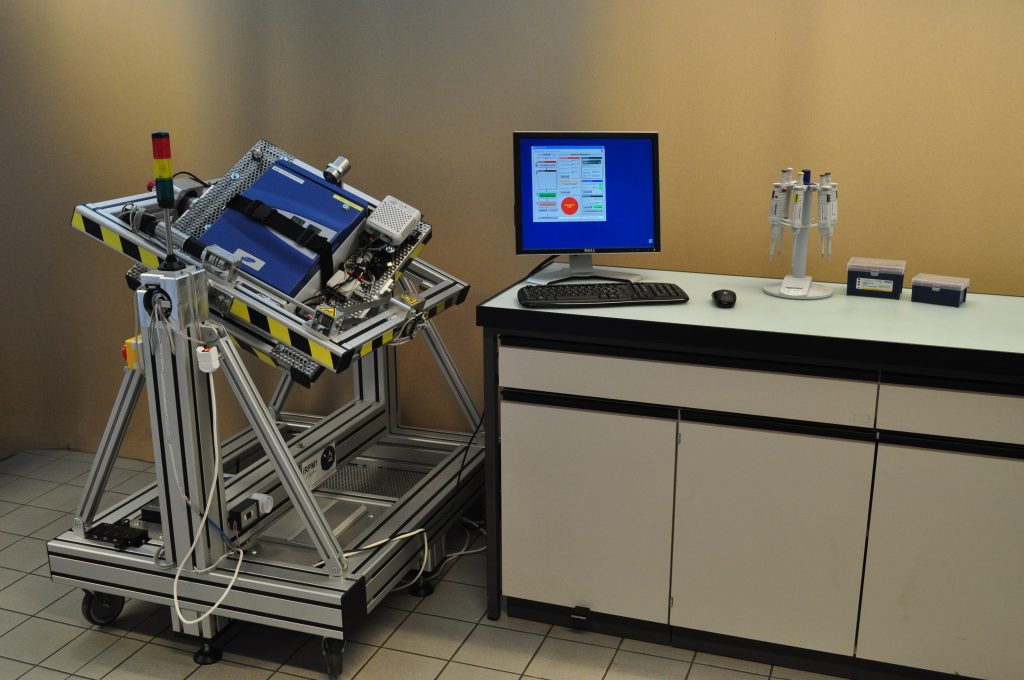
Random Positioning Machines (RPMs) are used as a ground-based model to simulate microgravity (or weightlessness). Thereby, the biological samples are continuously rotated about two axes. The simulation of microgravity requires that the RPM’s rotation is faster than the biological process under study, but not so fast that undesired side effects appear. We have built several RPM in various sizes and with various features.
It remains a legitimate question, however, whether the RPM can accurately and reliably simulate microgravity conditions comparable to real microgravity in space. We attempt to answer this question by mathematically analyzing the forces working on the samples while they are mounted on the operating RPM and by comparing data obtained under real microgravity in space and simulated microgravity on the RPM. In conclusion, after carefully considering the experimental constraints simulated microgravity experiments on the RPM work well for multiple biological samples and are an attractive alternative tool for microgravity research in a fast and straightforward approach. However, RPMs do not work for all samples and shear stressed caused by fluid motion could jeopardize the outcome.

Relevant Publications
Facilities for Simulation of Microgravity in the ESA Ground-Based Facility Programme
A Novel Microgravity Simulator Applicable for Three-Dimensional Cell Culturing